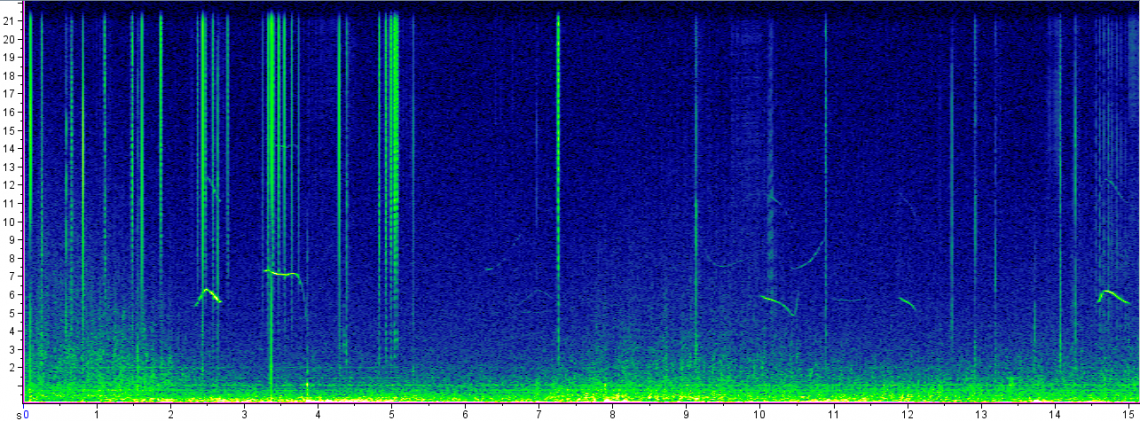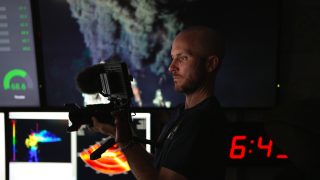As we pass the midpoint of our cruise, and after, quite literally, sailing past ‘hump day’, it is time to take a look over what has been achieved over the last few days. Following a ~15 hour transit to our first site on Tuesday, and continual observations for whales throughout daylight hours, work began at 04:00 that morning with the deployment of three DASBRs – Drifting Acoustic Spar Buoy Recorders.
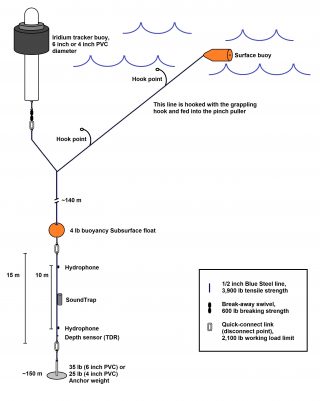
The DASBR
These free-floating recording devices are being used by the science team to listen for cetaceans around the Hawaiian Islands, where endangered species such as insular false killer whales and beaked whales are believed to reside. Deployed at dawn on the 22nd, the three DASBRs have been passively collecting data for the past 24hrs in a triangular formation roughly 1km apart.
On the DASBRs, two hydrophones form a vertical array at around 150m depth which allows scientists to calculate the depth and distance of the sound source (which, all going well, will be whales). By calculating how far any vocal animals are from the DASBR, these measurements will allow researchers to estimate the abundance of a species. Following 24 hours of CTD casts (which allow researchers to gather water samples), and eDNA filtration thereafter (during which the cells of animals are gathered), the DASBRs were ready to be recovered.
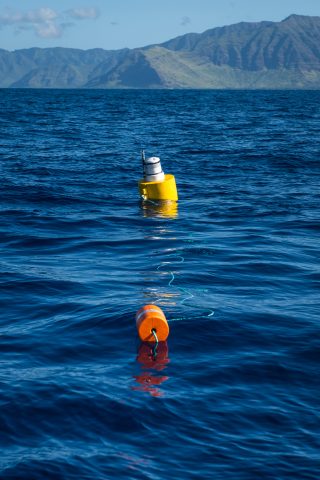
Recovering The Data
Recovery of the first DASBRs began on the morning of the 23rd of October, at 06:00. In order to retrieve them, the team worked alongside the crew of the R/V Falkor – using a grapple, a line and a winch to successfully recover all three DASBRs within two hours. Jennifer Keating-McCullough (Sr. Passive Acoustic Associate, NOAA/PIFSC/JIMAR) then removed the acoustic data recorders to begin the data transfer. Acoustics experts will now begin analysing this data to see which whales were recorded. In order to monitor the area during DASBR deployment, the R/V Falkor’s own hydrophone also played an important role by giving the scientists a real-time audio feed to monitor any vocalisations in the waters around the ship. Although the signal carried a lot of noise from the ship’s own engines, a squeal of excitement on the afternoon of the 22nd was heard from the control room; whales were heard in the area, which provided great moral amongst scientists that cetaceans were recorded on the DASBRs.
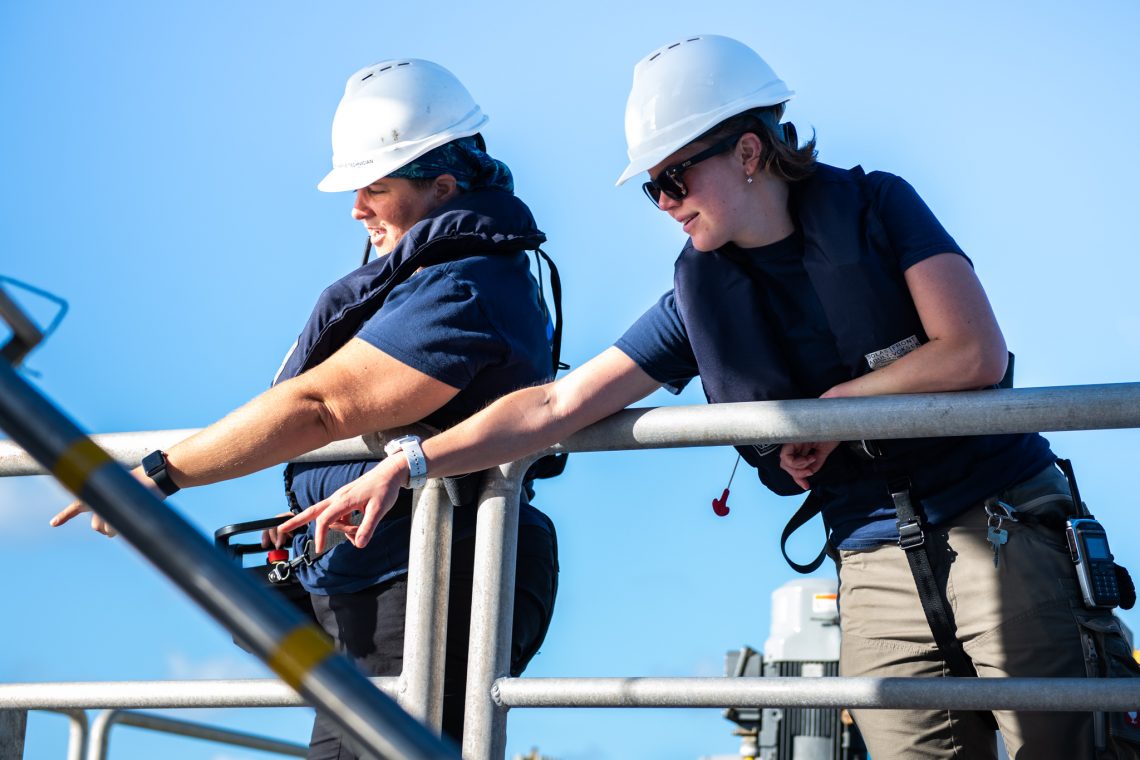
A Sneak Peak…
Below is an image (spectrogram) of dolphin vocalizations pulled from one the DASBRs! This 15 second spectrogram shows time on the x-axis versus frequency in kHz on the y-axis, of whistles and echolocation clicks. Have a listen (click on link at bottom) and come back soon for more results.
